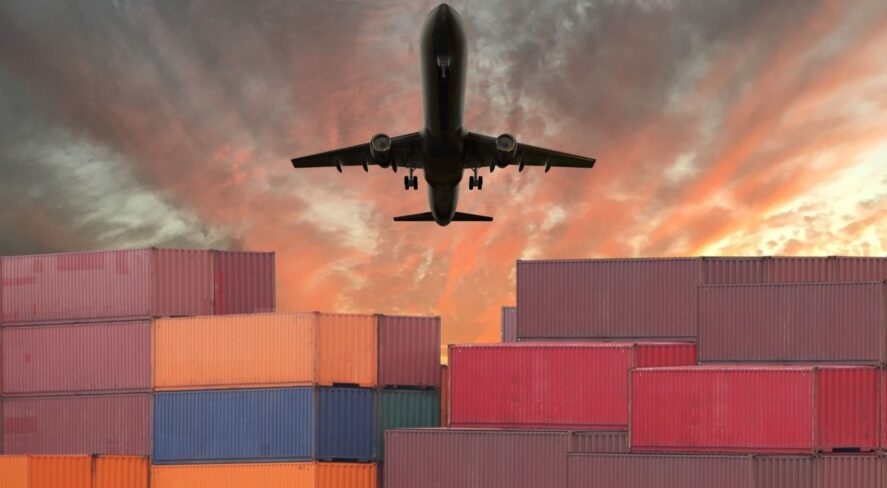Policy Update: New U.S. Tariffs on Imports

On April 2, 2025, President Trump invoked his authority under the International Emergency Economic Powers Act of 1977 (IEEPA) to declare a national emergency arising from conditions reflected in large and persistent annual U.S. goods trade deficits and impose sweeping “reciprocal” tariffs on countries that have asymmetrical trade relationships with the United States. The tariffs take effect in two waves: a 10% tariff on all countries (except for Cuba, North Korea, Russia, Belarus, Mexico and Canada) beginning at midnight on April 4, and individualized higher tariffs on the countries with the largest trade deficits that take effect at midnight on April 8. The list of individual tariff rates ranges from 11% to 50% and includes some of the U.S.’s biggest trading partners, notably the European Union (20%), China (34%), Japan (24%), Vietnam (46%), South Korea (25%), Taiwan (32%) and India (26%). Country-specific tariffs were calculated by the U.S. Trade Representative as the tariff rate necessary to “balance bilateral trade deficits” between the U.S. and each of our trading partners. China will be subject to a combined 54% tariff, since the 34% “reciprocal tariff” that goes into effect on April 8 will be in addition to the 20% tariff rate that Beijing is already subject to as of March 4.
By using the IEEPA and declaring a national emergency to implement these measures, the Trump administration is able to act swiftly without a lengthy determination process or subjecting this trade policy to congressional review. The executive order also gives the president the authority to modify the tariffs just as swiftly as they have been implemented, and the White House notes that these tariffs will remain in effect until President Trump determines that “the threat posed by the trade deficit and underlying nonreciprocal treatment is satisfied, resolved, or mitigated.” This gives the administration the option to significantly reduce or cancel tariffs as a part of negotiations with the countries effected, similar to the way that we have seen tariffs on goods from Mexico and China delayed and modified over the past few months.
The White House has already determined some limited exemptions to the “Reciprocal Tariff,” including articles not subject to presidential authority under the IEEPA; steel, aluminum, autos and auto parts already subject to different additional tariffs; copper, pharmaceuticals, semiconductors and lumber articles; bullion (gold); energy and other certain minerals not available in the United States; and any articles that become subject to Section 232 tariffs in the future.
For more clarity on how products will be effected, the White House has published an annex to the executive order that details the changes to be made to the Harmonized Tariff Schedule of the United States. The president also made two additional trade policy announcements during his “Liberation Day” press conference: implementing a 25% tariff on all imports of autos and auto parts that took effect at midnight on April 3, and clarifying that for Canada and Mexico, the existing tariff regimes remain in effect and are unaffected by the new policy, meaning that non-United States-Mexico-Canada Agreement (USMCA) compliant goods will continue to be subject to a 25% tariff, and USMCA-compliant goods will continue to be exempt. This means that – significant for many electronic security products – products manufactured in Mexico and Canada are unaffected so far by these changes.
Table of Implemented Trade Policy Actions From the Trump Administration
| Country-Specific Tariffs | |||
| Date | Country/Countries | Tariff Rate | Exemptions |
| Feb. 4, 2025 | China | 10% | None |
| March 4, 2025 | Mexico Canada | 25% | 0% tariff on all USMCA-compliant goods 10% tariff on all non-USMCA-compliant energy and potash |
| China | 20% | None | |
| April 4, 2025 | All | 10% | Cuba, North Korea, Russia, Belarus, Mexico and Canada are not subject Limited product exemptions |
| April 8, 2025 | 57 specific countries | Individualized rates above 10% | Limited product exemptions |
| Product-Specific Tariffs | |||
| Date | Product(s) | Tariff Rate | Exemptions |
| March 12, 2025 | Steel aluminum | 25% | None |
| April 3, 2025 | Autos Auto parts | 25% | USMCA-compliant autos may apply to lower the total tariff-able value of the auto USMCA-compliant auto parts are exempt |
For the most part, U.S. trading partners subject to the higher tariffs have reacted cautiously, criticizing the new rates but attempting to take a more diplomatic route with the White House before announcing retaliatory measures. There are a few exceptions, notably China, which has been a consistent target of most trade policy announcements since President Trump took office in January. Beijing swiftly announced a retaliatory 34% tariff to goods imported from the United States, kicking off a volatile reaction from the Trump team, which has threatened even higher rates up to 104% in total tariffs in response. The European Union (EU) has also had a sharper response to the policy, announcing that they are finalizing a package of countermeasures in response to the steel and aluminum tariffs and are now preparing further countermeasures to the 20% tariff implemented on the EU.
With a total economic impact of $431.3 billion, supporting 2.1 million jobs and $145.5 billion in wages, including supplier and induced economic activity, the United States continues to be the largest market for security products, dependent on global supply chains to deliver critical life safety and security solutions at an affordable cost to consumers.
The Security Industry Association (SIA) continues to seek information from SIA members about the impact of new tariffs. We strongly encourage you to complete our new questionnaire so that we can accurately assess the impact of these policies on our industry as a whole.
If you have any questions or comments, please don’t hesitate to reach out to Lauren Bresette, senior manager of government relations at SIA, at lbresette@securityindustry.org.
